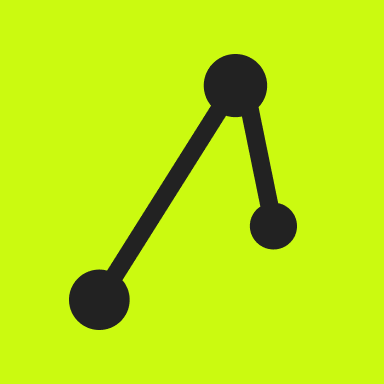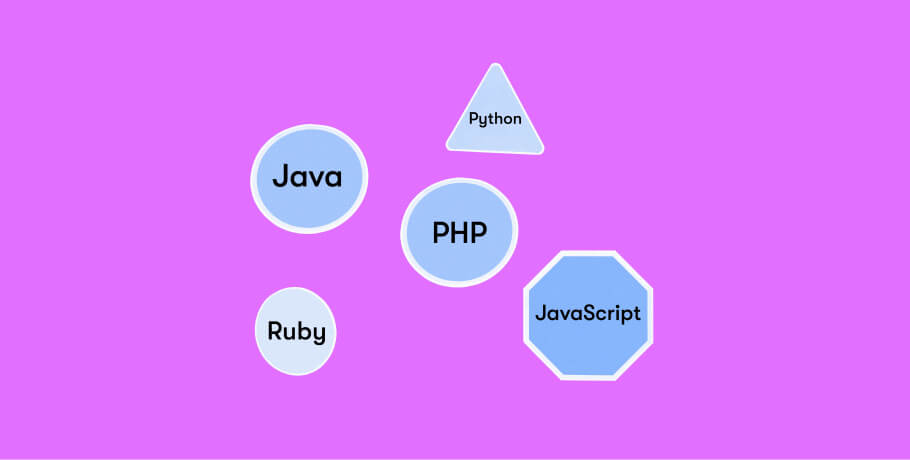Laravel and Symfony are perhaps the most popular frameworks in PHP software development. Both are easy to use, adapted to create projects of varying complexity and scale, and have active developer communities. But what can be said about the advantages of these frameworks for companies hiring PHP developers? Below, we will reveal the Symfony and Laravel differences in terms of business benefits.
Laravel and Symfony in brief
The open-source PHP framework Laravel was released back in 2011. Taylor Otwell created it to offer the world a multi-functional solution similar to CodeIgniter, which lacked useful features for web application development. At the same time, the components of Symfony act as the basis of Laravel.
Using Laravel, you can build not only websites, but also web applications based on the principles of object-oriented programming and the Model View Controller (MVC) architectural pattern. Thanks to a vast number of built-in tools, with the help of Laravel, PHP developers can create software solutions of varying complexity and scale — from one-page websites to social networks with complex functionality.
One of the main advantages of Laravel is the maximum simplification of all development processes, no matter how complex the structure and business logic of the future project will be. Despite this, developers generally choose this framework to work on serious, complicated projects.
As for Symfony, it is a powerful PHP framework also based on the Model View Controller pattern. At the same time, other object-oriented programming patterns are very actively used in its architecture. The framework is free and distributed under the MIT license. Symfony has excellent documentation, an ecosystem of full-featured plugins (over 1000 packages), and everything to speed up the creation of websites and web applications that are easy to scale and maintain.
To date, many well-known open-source projects are built on Symfony (entirely or partially), including OroCRM, Laravel, Magento, OpenCart, and Piwik, as well as the latest versions of Drupal.
Compared to Laravel, many people consider Symfony "too academic", which, however, pays off when developing complex digital solutions with a large code base.
want to work with the latest tech?
Join EPAM Anywhere to revolutionize your project and get the recognition you deserve.
Laravel vs. Symfony: pros and cons
Is Laravel based on Symfony? Yes, it is. But, although this framework is based on Symfony components, and both of these frameworks are open source, de facto, these are two different frameworks with their own pros and cons. That is why we invite you to see for yourself the difference between Symfony and Laravel in detail.
Advantages of Laravel
Let’s start with the main Laravel advantages.
Advanced security
The framework's codebase is secured from threats such as SQL injections or cross-site request forgery (CSRF), which protects users from losing important data. Laravel also provides a simple and efficient authentication system, allowing you to restrict access to unauthorized users for certain resources.
Great performance
Websites and applications on Laravel demonstrate consistently high-performance thanks to an advanced caching system and some plugins integrated during the initial build. The file caching driver saves many elements in the file system, thereby ensuring fast loading of content on the backend side. In addition, the framework has a unique message queue system, which balances the load on the server and ensures uninterrupted operation and data safety.
Simple scaling
The framework has native tools such as Laravel Cache for caching or Laravel Horizon for queuing. There are also some other services, for example, Eloquent ORM. This object-relational mapping system allows developers to work with different databases by implementing the ActiveRecord pattern without requiring them to write complex SQL queries for data access, which saves them time. A Laravel project can be integrated with GitHub, CircleCI, Docker, Amazon Web Services, and so on. All these features create optimal conditions for easy, cost-effective, and time-efficient project scaling.
Fast product launch
Laravel allows PHP developers to create applications quickly, as developers get a ready-made project structure and a bunch of built-in tools (like a template engine) from the very beginning, so they can focus on describing business logic. In addition, as we indicated earlier, the framework is built on the MVC architecture, which provides access to the entire infrastructure of web projects and saves time.
Ability to create multilingual websites
The Laravel framework helps you create products that target international markets. In particular, with its help, you can build multilingual websites that will instantly adapt to the user's specific language in particular geolocation.
Easy integration with third-party solutions
Developers can use thousands of third-party tools to integrate with your Laravel project. Unlike other frameworks, in the case of Laravel, this process is fast and seamless and does not degrade your project's performance in any way.
Efficient error and exception handling for better UX
Laravel has built-in error and exception handlers, as well as integrated logging libraries (such as Monolog). The Laravel ways of working with errors and exceptions positively impact the created products' usability.
Disadvantages of Laravel
Despite the obvious advantages, this framework has several disadvantages.
Occasional poor performance
Mobile versions of some Laravel-based projects can be heavier for faster loading. So, developers have to put more effort (and therefore spend more time) to ensure the proper level of performance.
Difficulties with updating versions
When developers need to update a framework version (for example, to create an update to an application or website), some parts of the code may not work as initially planned, and developers have to spend time re-creating broken components.
Advantages of Symfony
Now let's talk about the benefits of the Symfony framework, the components of which underlie Laravel.
Flexibility
Symfony gives developers complete control over configuration and other important project features and is compatible with many database systems (there are full-featured database classes with cross-platform support). Another significant aspect of this framework — code reusability — makes it an excellent choice for creating long-term projects that involve scaling in the future.
Ability to choose the approach to the development process
Symfony offers developers three approaches for creating projects:
- A full stack — for complex, multi-functional solutions;
- "From bricks" — for building solutions with the desired functionality based on a ready-made architecture;
- Based on a micro-framework — a combination of standalone modules that can be reused.
This choice allows developers to approve the most effective development model, which means bringing the product launch closer and providing good conditions for its further scalability.
Simple testing
Symfony has an independent library of PHP modules, which simplifies the unit testing procedure without requiring specialists to write complex scripts. Also, this framework automates functional testing, which works in favor of the speed of QA.
Fast and easy modernization
Symfony provides developers with reusable components, speeding up the process of creating a product and simplifying its customization. At the same time, Symfony is compatible with the Java ecosystem and supports third-party integrations, which together form an excellent foundation for quick and easy upgrades of existing solutions.
Interoperability
Symfony is compatible with numerous business libraries and supports existing PHP "standards" such as naming conventions or classes and PHPUnit. In practice, this allows developers to combine disparate modules and create custom solutions from them.
Convenience for developers
Symfony comes with high-quality documentation that lowers the entry barrier for developers. This means that if someone in your development team has no previous experience with this framework, it will not be difficult to understand its features. In addition, this product comes with advanced troubleshooting tools, especially those related to security.
Stability
Symfony is perhaps the most stable solution for large-scale projects in the PHP framework market. This is confirmed by regular updates, as well as seamless compatibility with earlier versions (by the way, this is one of the main disadvantages of Laravel).
Disadvantages of Symfony
Finally, let's discuss the shortcomings of the Symfony framework.
Occasional poor performance
Laravel has a similar drawback, but unlike Laravel, Symfony's performance can suffer due to integrations with third-party solutions.
Costly development
The initial costs of developing projects based on Symfony can be unacceptably high for startups and small businesses.
Symfony vs. Laravel popularity
If we talk about popularity among developers, Laravel takes the absolute lead in the Laravel vs. Symfony popularity race. In terms of business benefits, this means a wider pool of developers that you can engage in your project.
Symfony
Trends Builtwith analytics states that currently, 107,965 websites are built with the help of Symfony.
Laravel
According to this analytics, Laravel currently powers 1,777,136 websites worldwide, leaving many of other frameworks, such as CakePHP, behind.
Symfony vs. Laravel performance
Laravel developers get unified APIs for caching views, while their Symfony colleagues deal with caching source code and views by default. So, in the Laravel vs. Symfony performance battle, Symfony demonstrates a longer loading time.
Symfony
After testing the two largest web servers — Apache and Nginx, the average loading time for websites on Symfony is about 250 milliseconds.
Laravel
As for this framework, the same benchmark demonstrated much better performance: about 60 milliseconds.
Symfony vs. Laravel: scaling
As for Laravel and Symfony differences in terms of scaling, Symfony is somewhat more flexible than Laravel and, therefore, is more suitable for scalable projects.
Symfony
Working with Symfony involves the implementation of reusable components, allowing for faster development and more accurate organization of the codebase. This creates a good foundation for further scalability of the developed solutions.
Laravel
As for Laravel, despite numerous supported services, such as Eloquent ORM, which can take advantage of cloud services, and using the same architecture pattern as Symfony — MVC — this framework creates more dependencies. This fact provides less flexibility for existing solutions and a lower predisposition to their scaling.
Symfony vs. Laravel: security
Symfony uses advanced security tools. However, setting them up and integrating them into a project can be quite tricky. As for Laravel, this framework is characterized by a straightforward approach to implementing security.
Therefore, if you are looking for a framework to create a niche product that meets high-security standards and want to save the nerves and time of your development team, in the battle between Symfony PHP vs. Laravel the latter will be the best choice.
Symfony
Symfony provides many default security tools, some of which are HTTP-related (such as secure session cookies and CSRF protection). Also, this framework has advanced security solutions for working with demanding entities: providers, firewalls, and access control.
Laravel
Laravel provides enhanced application security: in particular, the framework's codebase is protected from threats such as SQL injection or cross-site request forgery (CSRF), protecting users from losing important data.
Symfony vs. Laravel: cost of development and maintenance
In terms of initial costs, in the Symfony framework vs. Laravel framework comparison Laravel is definitely winning. However, Symfony-based projects are easier to maintain and update due to their modularity.
Symfony
Symfony projects are fairly easy to maintain, but the initial developer costs can be pretty high.
Laravel
Laravel-based projects are relatively cheap for product owners. They are easy to maintain, but when it comes to scaling, due to numerous dependencies, developers often have to change more code than in the case of Symfony.
Symfony vs. Laravel: comparative table
To summarize our Symfony and Laravel comparison, let's take a look at the following table to assess the scope of these two frameworks.
Parameter | Symfony | Laravel |
Launch year | 2011 | 2011 |
Current LTS version | 6.4.2 | 6 |
Long term support | yes | yes |
License | MIT | MIT |
GitHub stars rating | 29K | 75.7K |
When to choose Laravel for your web project
Note that in 2021 Laravel has become the most popular PHP framework in the world due to its simplicity and many features that allow developers to create fast, scalable, and highly compatible digital products. This fact makes it easy to find specialists with relevant expertise, so if there is a question of difficulties in finding a development team, Laravel will be an excellent choice.
In general, this framework is perfect for launching startups and small business products, reducing time-to-market and development costs.
When to choose Symfony for your web project
Symfony is an excellent choice if your project has complex architecture and/or business logic, and you're planning to maintain it for the long term. It is also suitable for projects that are designed for scaling (or are already scaling).
Due to the modularity of this framework and the solutions created on its basis, your development team will be able to make changes in specific modules without touching the overall codebase. This will reduce the time to release and the risks associated with emerging new bugs.
How to choose the best framework: final tips
So, how to choose between Laravel and Symfony?
- First, you need to estimate the scope of your project. You can use Laravel even for a big project, but Symfony, on the other hand, definitely won't suit you if you have a small project with a limited budget and tight deadlines.
- Try to imagine what will happen to your project in 10 years — do you plan to modernize it? If so, Laravel may not be the best choice for you, as it will require a significant reworking of the codebase.
In general, when picking a PHP framework, be it Laravel, Symfony, or another one, you should check your project scope with professionals. Take into account the preferences of your development team, as some of them can have strong arguments in favor of a particular technology on the market.
In terms of universal recommendations, as you can already understand, Symfony is better suited for large-scale projects that do not require an urgent launch to the market and operate on a fairly large budget. Laravel is a more cost-effective solution and is more suitable for small businesses and startups.
FAQ

The EPAM Anywhere Editorial Team is an international collective of senior software engineers, managers and communications professionals who create, review and share their insights on technology, career, remote work, and the daily life here at Anywhere.
The EPAM Anywhere Editorial Team is an international collective of senior software engineers, managers and communications professionals who create, review and share their insights on technology, career, remote work, and the daily life here at Anywhere.
Explore our Editorial Policy to learn more about our standards for content creation.
read more


















